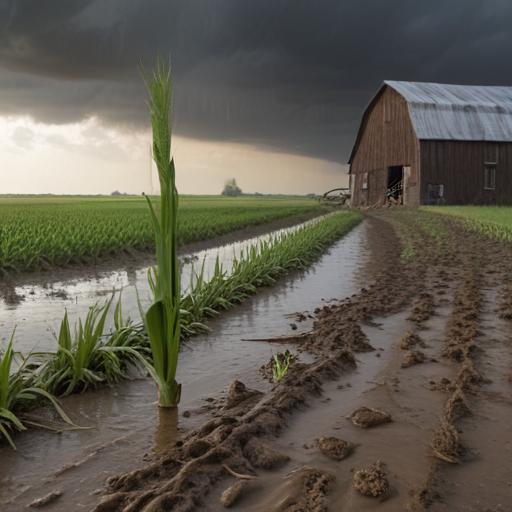CASS COUNTY — Following three consecutive days of rainfall in North Dakota, rural Cass County’s fields are still saturated, prompting mixed feelings among farmers. While the rain, which brought over 2 inches from Sunday through Wednesday, May 21, has enhanced soil moisture, it has also resulted in standing water that may hinder early crop growth.
Currently, nearly half of the state’s soybeans have been planted, a significant jump compared to last year at this time, as noted by the North Dakota Soybean Council. Miki Miheguli, the council’s director of agronomy, pointed out that the preceding precipitation created ideal seeding conditions, particularly in the Red River Valley.
However, the recent wet and colder temperatures raise concerns for crop emergence. “When there’s crops emerging, and now they’re going to be sitting in some water and moist dirt and cold temps, that can be a bad story,” warned farmer Stephanie Cook, who noted the risk of soil-borne diseases under such conditions.
Cook expressed her appreciation for the rainfall but also emphasized the need for a dry period to allow crops to establish themselves. “We don’t want the rain to shut off completely, but we could use a break to dry out a little bit, and let the crops grow some, and then get another shot of rain,” she said.
On a hopeful note, despite the unexpected cold snap, farmers are relieved that no frost damage has occurred overnight. With planting ahead of schedule, many remain optimistic about the critical management opportunities that lie ahead for their crops in the next few weeks. Miheguli reinforced this optimism, saying, “We have very critical opportunities coming for us to better manage our crops in the coming weeks.”
This balanced outlook presents a reminder of the perseverance and adaptability needed in agriculture, especially when faced with unpredictable weather conditions. The ability of farmers to navigate these challenges brings hope for a successful growing season.
